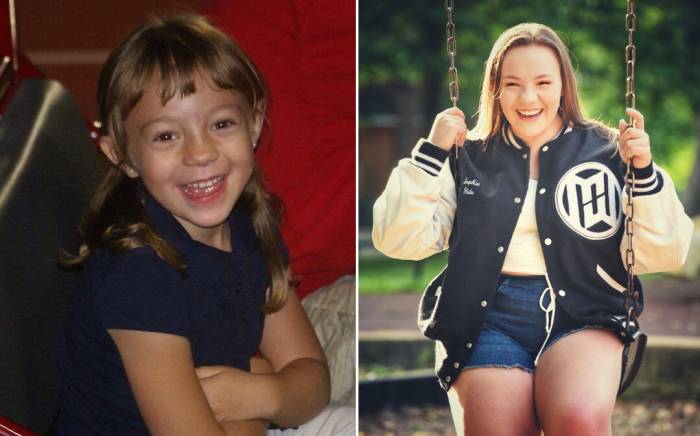Surgery isn’t right for every child with epilepsy. But for children who experience debilitating seizures not controlled by other therapies, surgery offers life-changing potential. Some children walk away from surgery able to live the rest of their life seizure free. Other children experience far fewer or less severe seizures, leading to a fuller, more active life.
World-class pediatric epilepsy surgery expertise
When you come to the Washington University Pediatric Epilepsy Center at St. Louis Children’s Hospital, your child is cared for by one of the most experienced pediatric epilepsy surgery teams in the country. We provide a full range of the most innovative epilepsy surgery options available today. Members of our team helped to develop some of these techniques.
WashU Medicine pediatric neurosurgeons use the latest diagnostic technologies and new, minimally invasive surgical techniques. That means we can now offer surgery as a treatment option for more children with epilepsy than ever before.
Learn what to expect when deciding if surgery is the right epilepsy treatment for your child in our guide to the patient journey.
Considering surgery for pediatric epilepsy
Considering surgery for your child is never easy. You can trust our team to guide you through your options and have your child’s best interest at heart.
During our comprehensive surgical evaluation process, your doctor will conduct a thorough medical exam. We may perform certain tests, such as an electroencephalogram (EEG) study, in our sophisticated Epilepsy Monitoring Unit (EMU). Our specialists dedicate time and effort to discussing your child’s care with each other and with you. Learn more about the steps involved in epilepsy surgery evaluation.
Types of surgery for pediatric epilepsy
Over decades, our team has performed hundreds of surgeries to diagnose and treat pediatric epilepsy, with excellent results.
Our surgeons perform intricate epilepsy surgeries using open (traditional) and less invasive techniques. A minimally invasive approach may mean your child experiences less pain and recovers faster after surgery.
There are two main goals of epilepsy surgery: seizure freedom (elimination of seizures entirely) or palliative effects (reducing how often seizures happen or their overall severity). We offer several types of brain and other surgeries for epilepsy.
A surgical procedure may treat epilepsy by removing the part of the brain where a seizure happens. Other times, surgery can help stop the spread of faulty electrical currents through the brain.
Diagnostic or localizing epilepsy surgeries
Certain procedures help us find the location of your child’s seizures or brain functions. This helps increase the safety and effectiveness of epilepsy surgery. We call these diagnostic or localizing epilepsy surgeries. Examples include:
- ROSA™ stereo EEG uses a robotic surgical assistant (ROSA) to assist the surgeon in placing electrodes into the brain to safely pinpoint where seizures start.
- Subdural electrode recording uses open (traditional) surgical techniques to carefully place electrodes directly on the brain surface. These electrodes help doctors map brain functions and find where seizures start.
- Intraoperative MRI allows for precise imaging of the brain while the surgeon is performing surgery, making resection surgeries (where we remove faulty brain tissue) safer and more complete.
Epilepsy treatment surgeries
We specialize in the following epilepsy treatment surgeries:
- Corpus callosotomy is a palliative surgery where doctors separate the two hemispheres of the brain. It can reduce severe seizures and can be performed with open techniques or lasers.
- Hemispherotomy is the surgical disconnection of one hemisphere of the brain. It can eliminate seizures that come from one side of the brain.
- Lesionectomy is surgery where doctors use MRI images to target and remove an abnormality (like a tumor) that is causing seizures.
- Temporal lobectomy is one of the most common epilepsy surgeries and can be performed with open techniques or with a laser.
- Extratemporal epilepsy resective surgery is open surgery performed commonly in children with seizures that begin outside the temporal lobe. It can be performed using open techniques or with a laser.
- Minimally invasive laser thermal ablation is a newer, FDA-approved device that can eliminate seizures by using lasers and small incisions.
- Radiofrequency ablation is a minimally invasive treatment option using radiofrequency waves to target specific areas where seizures are localized.
- Gamma Knife® radiosurgery is a completely noninvasive (no incisions), outpatient therapy that delivers beams of energy to create lesions deep in the brain. It is commonly used for brain tumors but can be used to treat small, deep epilepsy lesions in select patients.
Neurostimulation therapies for epilepsy
We offer the following neurostimulation therapies to treat epilepsy:
- Vagus nerve stimulation (VNS) is an outpatient procedure to implant a small, pacemaker-type device under the skin. This device connects to a small electrode that continuously stimulates a nerve in the neck. This FDA-approved therapy can reduce seizures in the majority of children.
- Responsive neurostimulation (RNS) is an FDA-approved therapy where a surgeon implants a complex seizure recording and detection device in the skull. The device works with implanted electrodes to detect and stop electrical seizures before they spread.
Life after pediatric epilepsy surgery
Your child’s care doesn’t end after surgery. We follow children closely in the weeks and months after epilepsy surgery, to ensure your child’s health and safety.
As time passes, we continue to see children at least once a year. This long-term follow-up helps us understand how the treatment has benefited your child. It also gives us a chance to address any challenges that may have come up since surgery.
We’re here for you for the long haul and will do everything we can to ensure your child enjoys life with minimal epilepsy interruptions.








